Travel to the homeland of Tamerlane or a trip to Shakhrisabz, Uzbekistan
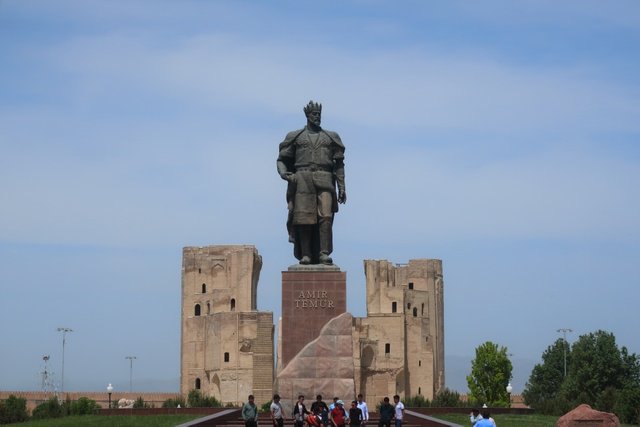
Hello! It's been a long time since I published posts about my trips - a lot of work had accumulated and there was absolutely no free time to prepare travel reports. And there was no time for the trips themselves either. And now, I had a free minute and I would like to tell you about the trip to Shakhrisabz, which took place already few months ago in early May. but only now got around to writing a post.
The last time I was in Shakhrisabz was 13 years ago and it was interesting for me to see how the city has changed. And it has changed very much. Unfortunately, not for the better. In the heat of "reconstruction and improvement" workers literally destroyed the historical part of Shakhrisabz, and not only it. The total illiteracy and incompetence of both local authorities and those responsible for the preservation of the historical heritage has led to the fact that instead of original or professionally restored unique monuments, they are swallowing outright hack-work that does not correspond to ancient models in format, features, quality, artistic level and disfigures a historical monument.
Previously, the restoration of historical architectural monuments was carried out by the only in Central Asia Uzbek Research Design Institute for the Restoration of Architectural Monuments, which was "safely" ditched in the 1990s and all restoration work was handed over to private firms (often affiliated with some local governors), which instead of restoration, they simply laundered money. As a result, the unique madrasahs are covered with some kind of incomprehensible pseudo-historical brick, and instead of authentic wooden windows in the 19th century palace, terribly tasteless aluminum windows are installed.
It got to the point that the UNESCO World Heritage Committee included the historical center of Shakhrisabz in the List of World Heritage Sites in Danger. The reason for this is the irreversible changes in the external appearance of the historical part of the city, caused by the destruction of buildings in the center of the medieval quarters of the World Heritage Site and the construction of modern facilities. For example, these two-story houses in some kind of pseudo-Middle Eastern style.
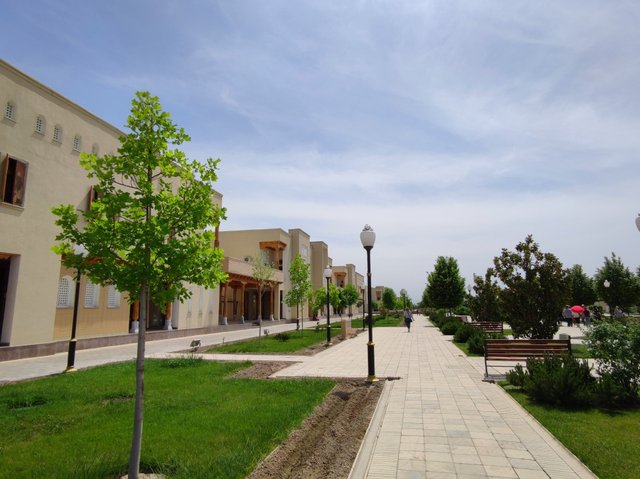
The fountain, by the way, does not work ...
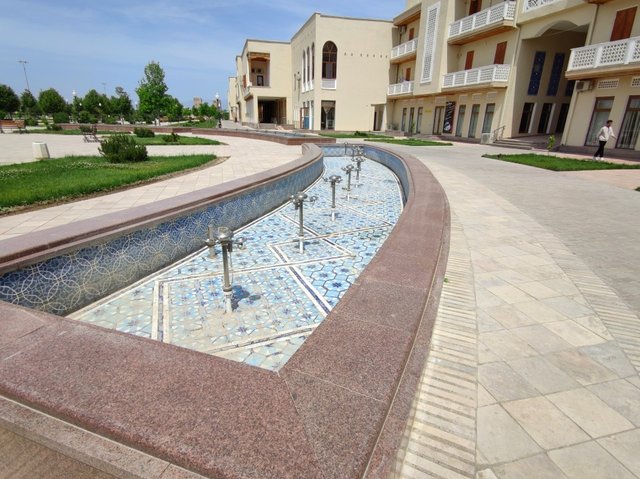
Since it can be indignant endlessly, I propose to move on to the description of the trip itself. So, early in the morning we went by high-speed train to the city of Samarkand.
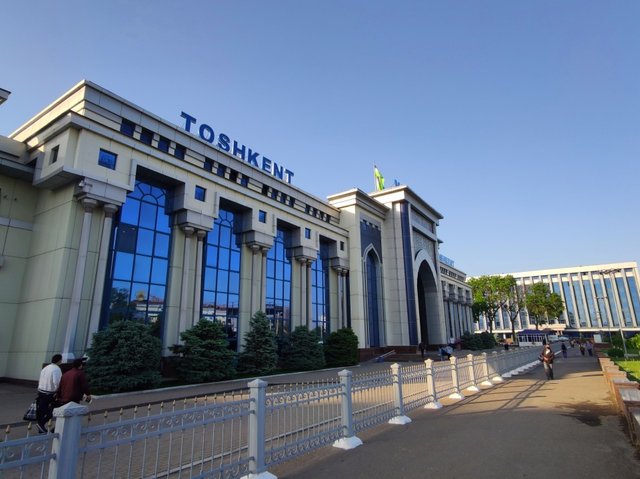

And from there already by comfortable minibuses to Shakhrisabz. On the way, we passed the Demon Plateau and, of course, stopped for a few minutes to take a photo.
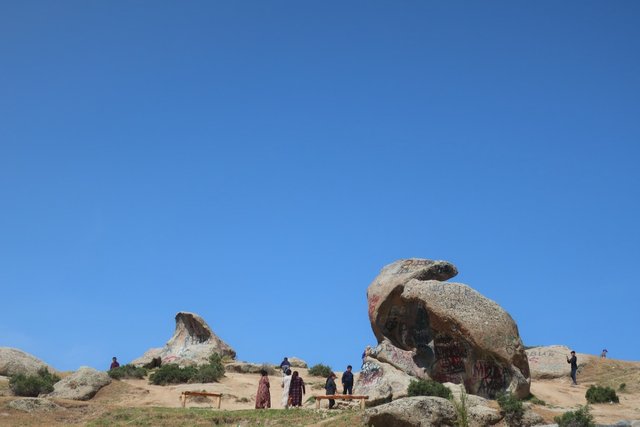

It turns out that in the 1970s the film "Apache" was filmed here with Goiko Mitic. Local landscapes are reminiscent of the US Southwest. By the way, the role of the Apaches was played by local men from the kolkhoz (collective farm) named after Alisher Navoi. Which at first they could not persuade to act, and then they could not calm down - so they laughed at each other.
I was here about three years ago and since then figures of various animals have been added to the boulders - for example, a huge cobra. They say there was even a monument to Goyko Mitic, but then it was removed. Apparently half-naked Indians are not in fashion now :).
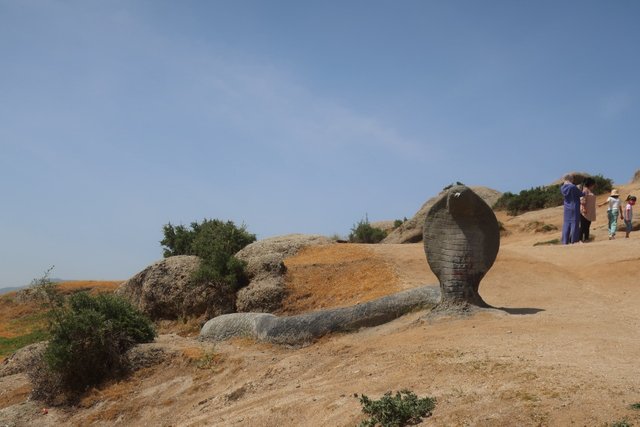
By the way, as you may remember, I love taking pictures of ladybugs. This time there were no living ladybirds - I had to be content with stone ones.
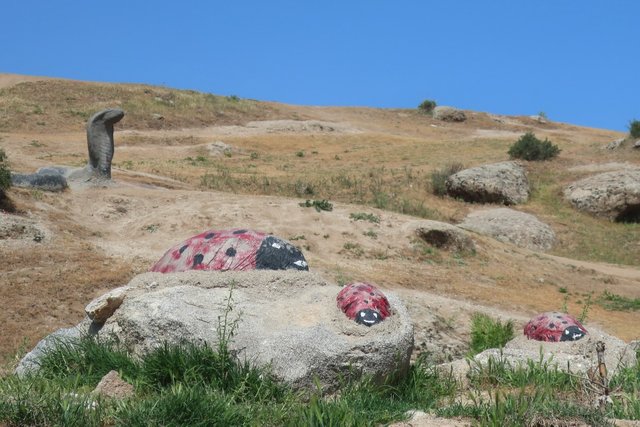
We drove through the pass and began our descent into a beautiful green valley. Here, on the pass, is preparing the most famous dish in all of Uzbekistan - tandoor-gusht (lamb baked together with coniferous branches in a tandoor). The dish is very popular and there is a huge queue for it. Moreover, a significant part is sent to Tashkent. Local people say that several dozen rams are slaughtered here every day. In my opinion, tandoor-gusht is very greasy, and it smells specifically. But this is what the pampered metropolitan says in me.
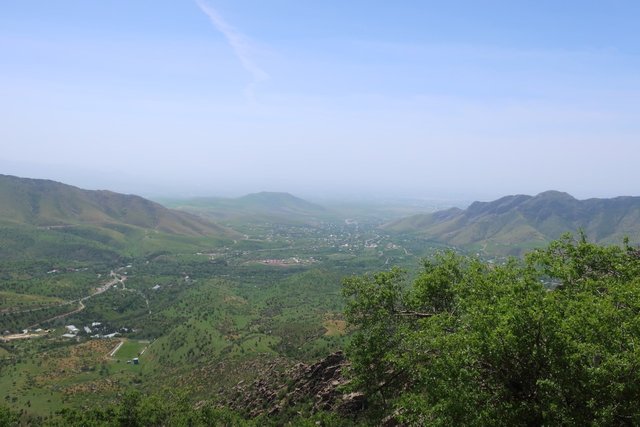
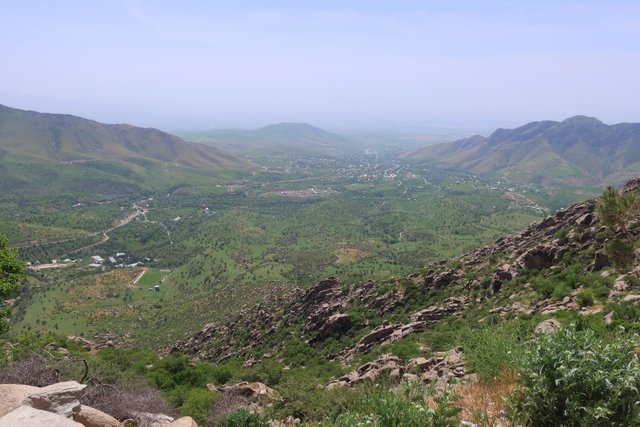
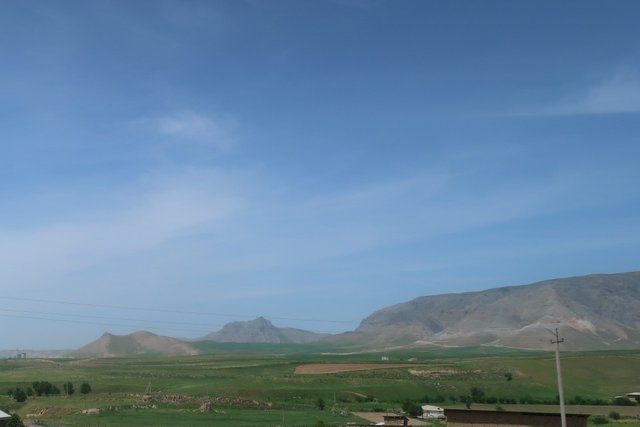
So, we were approaching Shakhrisabz. The name of the city is literally translated as "green city". But this is how it began to be called from the XIV century, and before that the city was called Kesh (translated from Sogdian - "house, settlement"). The city is very ancient - according to some sources it was founded in the 8th century BC. At different times, this city was visited by the troops of Alexander the Great, then the Arabs, then the Turks and so on. And in one Turkic tribe Barlas, which ruled this territory, Tamerlane was born in 1336. I think it makes no sense to describe his achievements (both good and bad) - at one time I wrote a lot about the Iron Lamer. The city received the greatest development during the period of his reign. After the death of the ruler, the city gradually lost its importance and now it is, although it is the administrative center of the Kashkadarya region, its population barely exceeds 100 thousand people.
In 2000, the historical center of the city and its archaeological, architectural, religious and cultural monuments were included in the list of UNESCO World Heritage Sites under the name “Historical Center of Shakhrisabz”.
The most famous monuments of Shakhrisabz:
the ruins of Tamerlan's palace - Aksaray;
memorial complex Dorut Tilavat
the remains of the dynastic tomb of the Timurids Dorus-Siadat, including the cenotaph of Timur.
Here we will go to them ...
** Ak-Saray is the residence of Tamerlane in Shakhrisabz. **
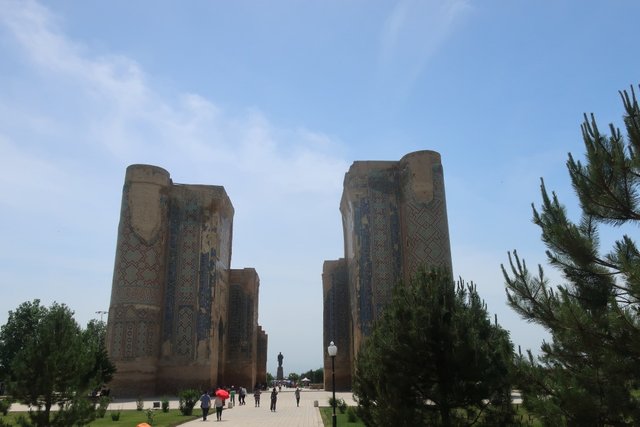
The most famous and visited attraction of Shakhrisabz. A huge structure, from which only the remains of the portal have survived. By the way, its height was 70m. But even the ruins are impressive. For example, the main courtyard was 120-125 m wide and 240-250 m long. And inside the courtyard there was a large swimming pool.
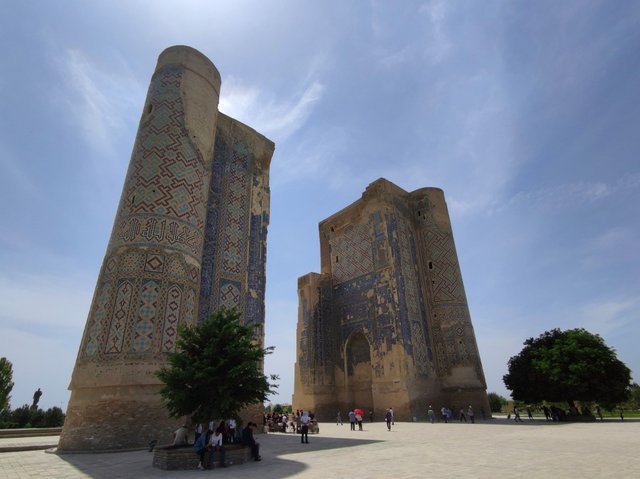
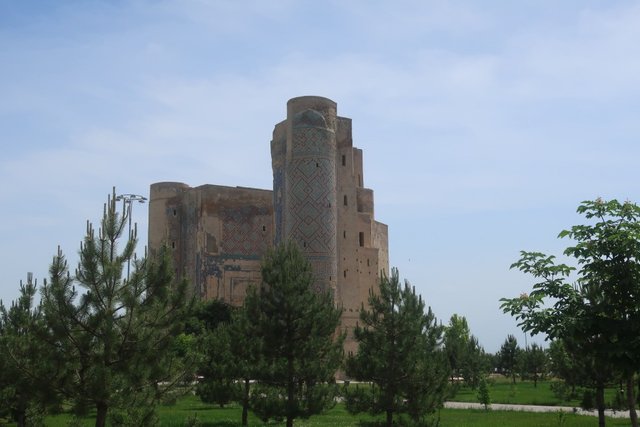
The walls were decorated with beautiful multi-colored mosaics. Inside the walls there are recesses where the guards sat, hiding from the heat.
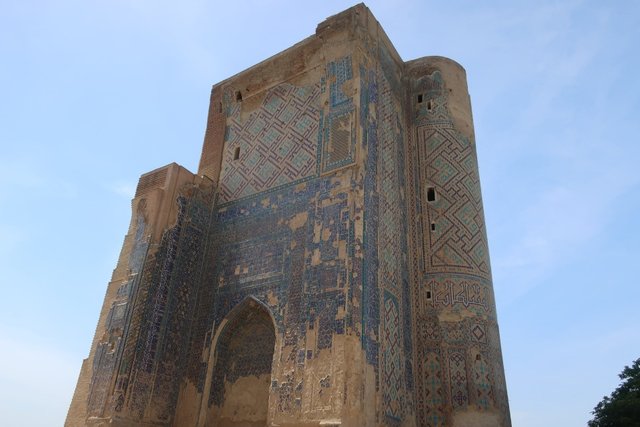
According to legend, there was a pool with running water at the top of the portal. Water flowed there from the mountains through a special gutter. But this is of course only a beautiful legend. In general, many legends are associated with the history of the construction of the palace. For example, when Tamerlane summoned an architect and outlined to him the full scale of the task. After the architect came to his senses, he demanded to give him direct access to the state treasury. When he received it (here, by the way, a confirmation of the implausibility of the legend), he began to make blocks of clay and gold. Seeing that Tamerlane did not even blink at the sight of such construction know-how, the architect broke the blocks and returned the gold back to the treasury. And this is a clear confirmation of the implausibility - as our experience shows, modern developers are happy to put their paws into the state treasury, but you will not wait for a return of funds from them. Apparently this is true not only for modern, but also for medieval builders - Tamerlane was surprised by the architect's behavior and asked: "Why did you do this?" By the way, I suppose that after the determination of Tamerlane was tested, the cost estimate increased many times ...
There is also a legend related to the completion of construction work. When the building was almost ready, Tamerlane began to feed the craftsmen so that they would quickly finish the finishing of the building. But the work did not progress. Then the angry Tamerlane demanded to bring the chief architect to him, but he hung a chain in the main arch and disappeared somewhere. After some time, he appeared. Tamerlane rightly assumed that the architect, having received an advance payment, went somewhere on vacation and, in anger, decided to execute him. Still, it is useless to chill in resorts when an object of such importance has not been commissioned. But the architect replied: “I did not dare to disobey the order of my master, but I could not carry it out in any way. Severe punishment awaited me in any case, since such a magnificent building must shrink, otherwise the entire cladding would have been destroyed. " Tamerlane changed his anger to mercy and gave the architect more money.
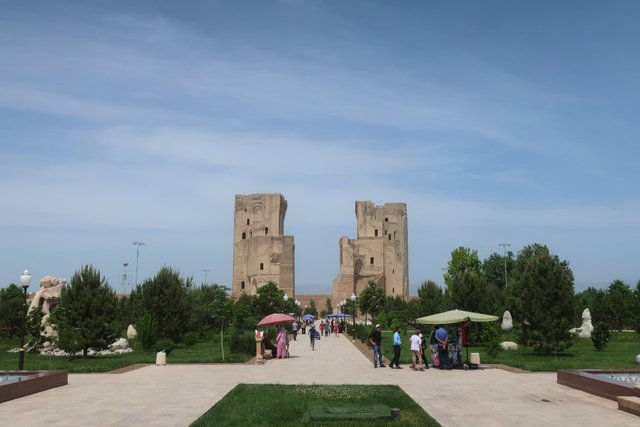
And this is how the portal looked like before destruction.
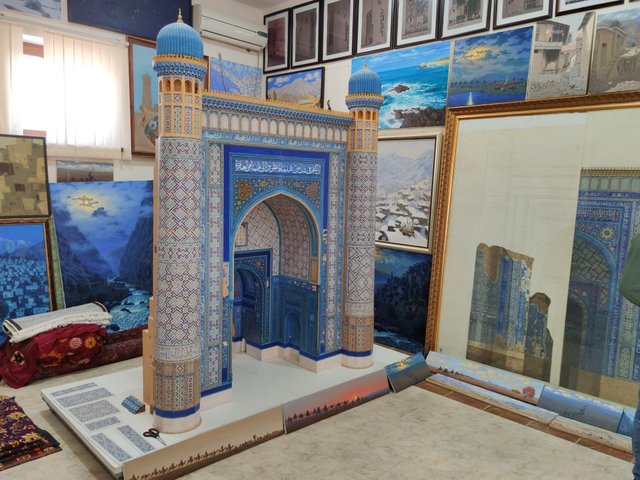
In the 90s of the last century, a monument to Tamerlane was erected here. Initially, the architects wanted to put it facing Samarkand - the future capital of Tamerlane. However, the first president of Uzbekistan I. Karimov ordered to turn it 180 degrees and now Tamerlane is looking at the graves of his ancestors and at his cenotaph.

We took a picture at the foot of the monument and moved on. 13 years ago there was a street of artisans, adjacent to the old one-story houses. During the "restoration" everything was demolished and some obscure houses in the pseudo-Arab style were built.

This is the misfortune of Uzbekistan - our people can build beautifully, but, alas, they cannot maintain the building in proper order. The dry and non-working fountain is another proof of this.

On the ground floors there are souvenir shops, which made in China. The only spot of interest was the artist's workshop. I especially liked the picture with Ak-Saray in winter.
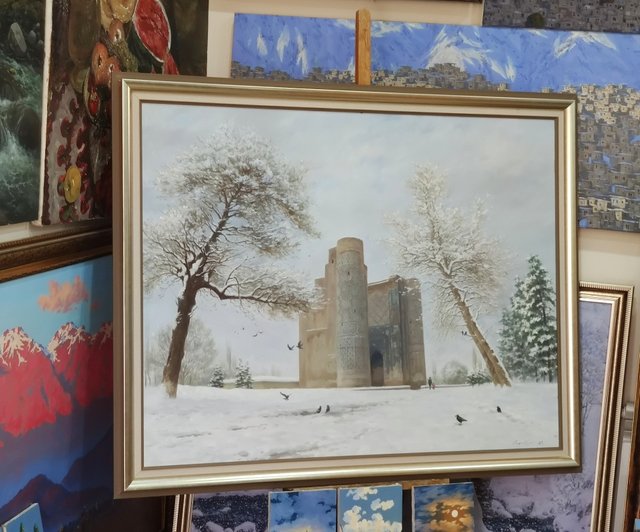
From there we headed to the mausoleum of Jakhongir and Omar Sheikh through the local mosque. The next namaz just ended and the people leaving were watching us with interest. ... I really like the attitude of provincial Muslims to the Gentiles and foreigners - it is mostly curious and without enmity. But in Tashkent itself, the parishioners, most likely, would look at us unkindly. Although the doors of the mosques are open to everyone.
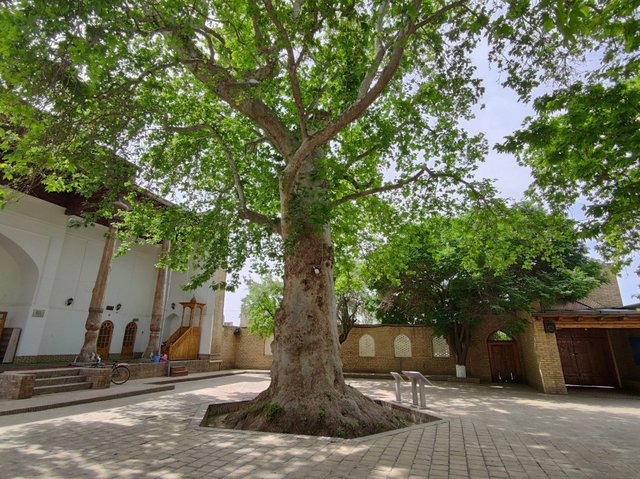
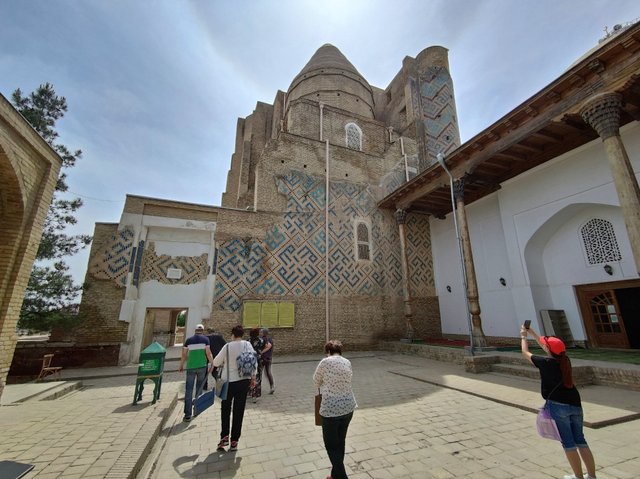
So, the mausoleum of Jakhongir and Omar Sheikh or the Dor-us Saodat complex ("Repository of Power") was intended for the entire Temurid dynasty and was built after the sudden death of Tamerlane's beloved son, Jakhongir, in 1376. After his death, Jakhongir's body was transported from Samarkand to Shakhrisabz, on the historical homeland of the ancestors.
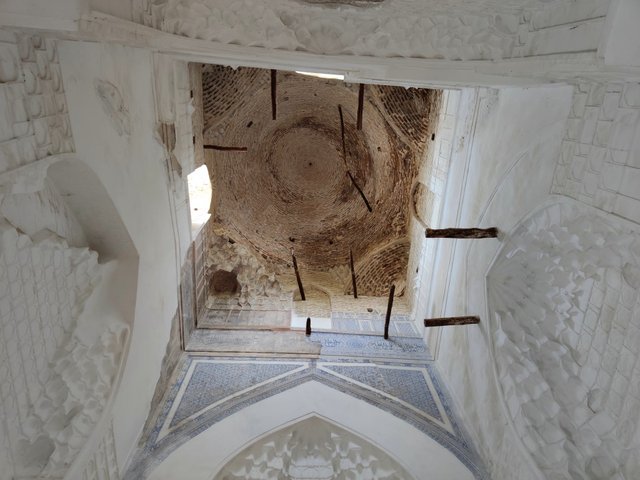
The second son of Tamerlane - Umarshaykh (Omar-Sheikh), was killed during the siege of a fortress in Kurd in Iran, and was also buried in the Dor-us Saodat complex.
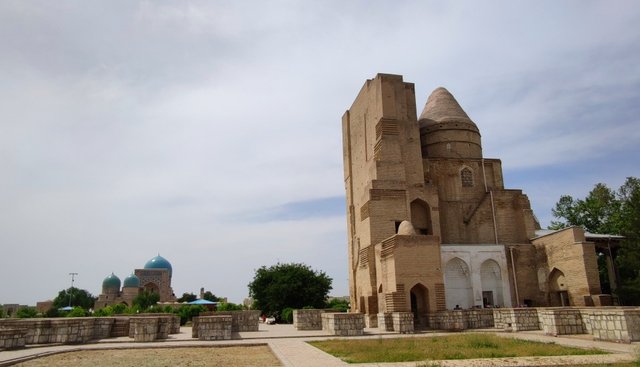
In addition to the tombs themselves, a madrasah and a ziroathona were built nearby - places for pilgrims to rest. However, these buildings were destroyed by order of the Sheibanid ruler Abdullakhan II in the second half of the 16th century. In the middle of the XIX century. a multi-room Khazri Imam mosque with a vaulted ceiling in the hall and decorated with ayvan was built near it. The one we passed through.
In addition, Tamerlane ordered to prepare a crypt for himself, but was dissatisfied with the results and ordered to remake it. But before the end of construction, he did not live.
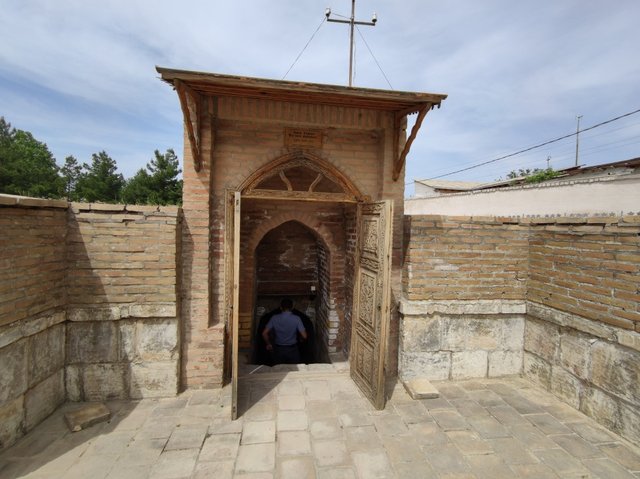
In 1943, Tamerlane's crypt was found. One kid, playing football in this place, fell into the ground. Local residents climbed to pull it out and found a crypt. The decoration of the room is quite simple, with the exception of the quotes from the Quran carved into the walls and arches, which read: “The dominion belongs to Allah. Only Allah is eternal "," Good is in the hands of Allah, and he is powerful in everything. " In the center of the room is a marble sarcophagus covered with a huge monolithic marble slab 11 centimeters thick with five iron rings at the corners and in the middle. Encrypted inscriptions were found on the slab, which relate to the life of Tamerlane, therefore it is believed that the crypt was intended for him.
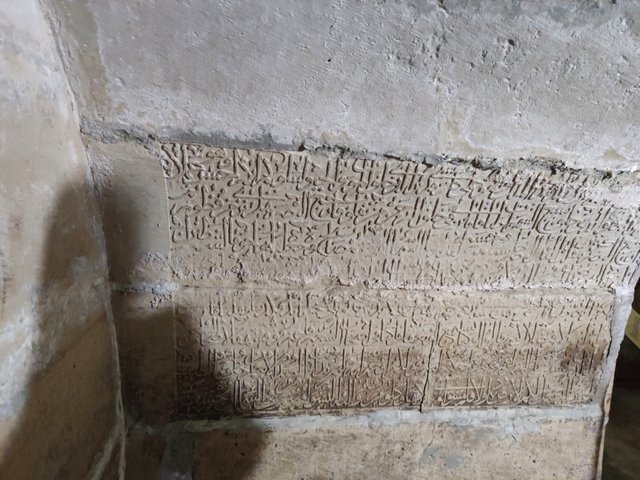
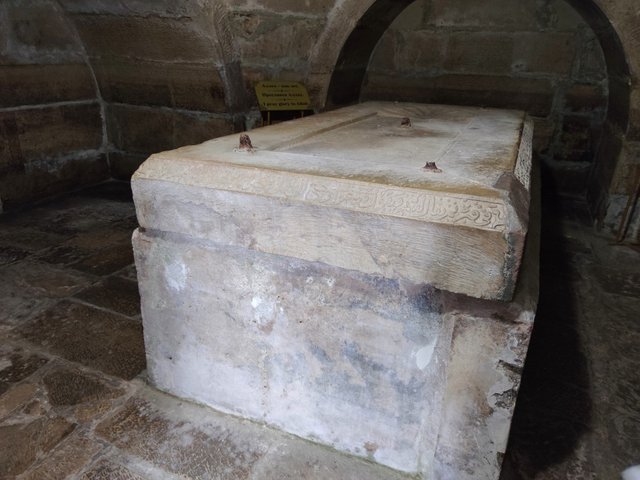
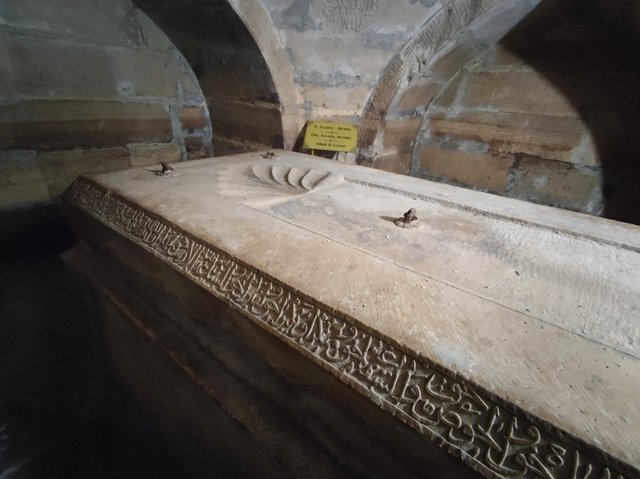
Leaving the crypt of Tamerlane, we headed to the Dor-ut-Tilovat Memorial Complex ("The Place of Reading the Holy Quran")
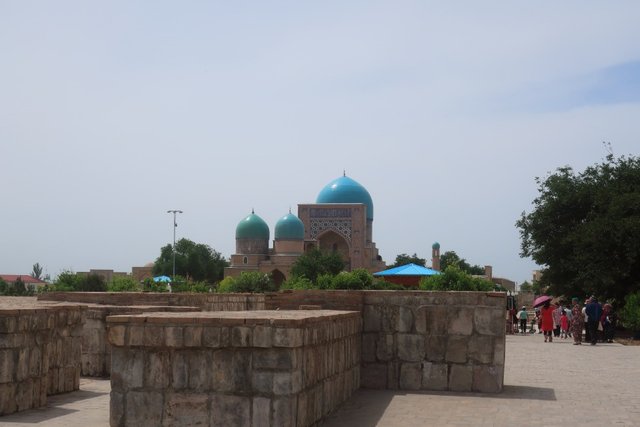
This complex was formed in 1370-1371. after the death of the outstanding religious figure Shamsiddin Kulal, the founder of the religious and philosophical movement of Sufism, the spiritual mentor of both Tamerlane's father Taragay, and Tamerlane himself, and the teacher Bahauddin Naqshbandi. His grave immediately became a place of veneration.
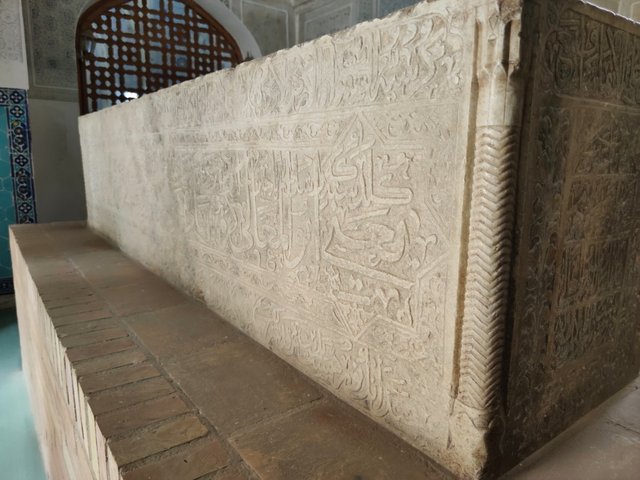
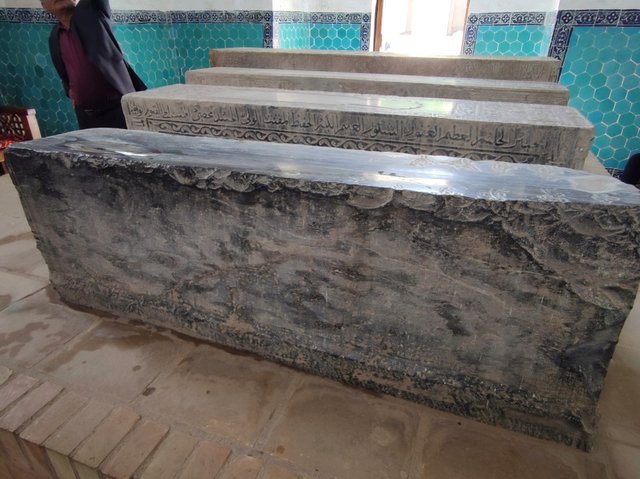
Opposite the mausoleum in 1435, the Kuk-Gumbaz Mosque (Blue Dome) was built. The inscription on the portal indicates that the mosque was built by Ulugbek - the grandson of Tamerlane - the very popular scientist-ruler.
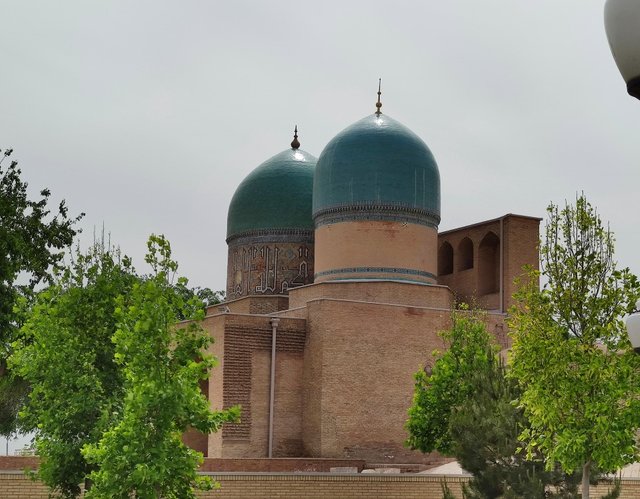
Alas, only a fragment of the patterned painting (in the center) remained from the original decorations. Everything else was in a terrible state and the restorers were forced to recreate the pattern.
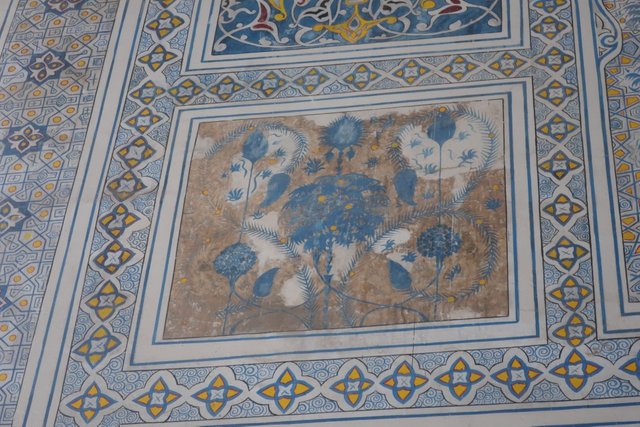
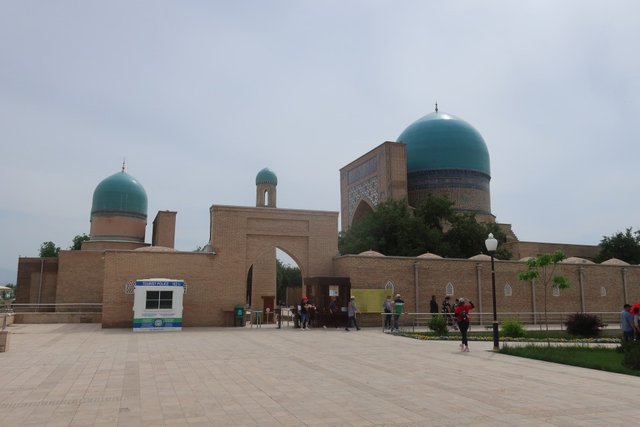
We quickly examined this complex and headed back. We had a long way to get to Samarkand, where we had to catch the train to Tashkent.
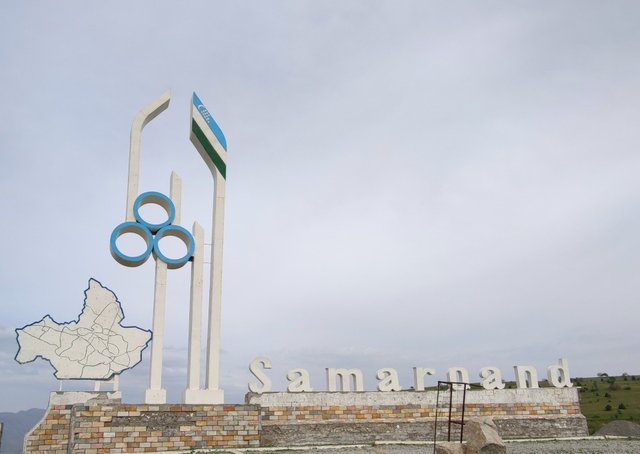
Passing Samarkand, we stopped for a minute near Registan - how is it possible to visit Samarkand and not take a photo on Registan ?! Sinful!
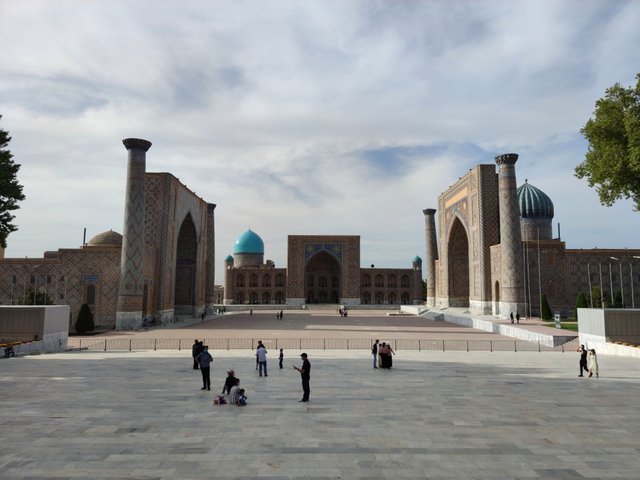
But time was already running out, so after clicking a couple of group photos, we rushed to the station. Fortunately, we were on time!

We loaded onto the train and set off on the return journey.
I had ambiguous impressions from this trip - on the one hand, I never cease to admire the grandeur of the buildings of the times of Tamerlane - it’s incredible how much money and effort such a construction cost! On the other hand, the licked, formulaic streets and buildings (which no one looks after) left a painful impression. I am angry about this inept restoration in our historic cities. Really, responsible people do not understand that tourists are attracted by authentic buildings (albeit dilapidated), and not incompetent remakes in the style of fairy tales from "1001 Nights"? Better to walk in the mountains ...
My next story will be devoted to just a hike in the mountains to the Viewing pass. That's where beauty is so beauty))). It was a tough, but very cool and beautiful hike. And the photos turned out to be simply gorgeous :).
Congratulations @damm-steemit! You received the biggest smile and some love from TravelFeed! Keep up the amazing blog. 😍 Your post was also chosen as top pick of the day and is now featured on the TravelFeed.io front page.
Thanks for using TravelFeed!
@for91days (TravelFeed team)
PS: TravelFeed is in social media to reach more people, follow us on Facebook, Instagram, and Twitter.